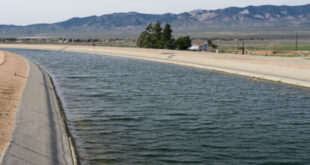In order to assist in fulfilling CA Governor Gavin Newsom’s April 29 executive order calling for a suite of actions to build a climate-resilient water system and ensure healthy waterways three state agencies are seeking the public’s input and assistance. Public input will aid the Natural Resources Agency (NRA), California Environmental Protection Agency (CalEPA), and Department of Food and Agriculture (DFA) craft recommendations for meeting future water needs and ensuring environmental and economic resilience through the 21st century.
The input will help strengthen the state’s communities, economy and environment as well as determining priorities and actions to ensure safe and dependable water supplies, flood protection and healthy waterways. Complementary actions for these objectives can also be determined.
“Think about California’s diverse regions 30 years from now,” said Cal EPA Secretary Jared Blumenfeld. “What can the state do now to best help people, the environment and the economy thrive even as California’s natural fluctuations grow more variable and extreme?
Creating a climate-resilient water system would broaden California’s approach to water in the face of a range of existing challenges — native fish populations threatened with extinction, unsafe drinking water, severely depleted groundwater aquifers, agricultural communities coping with uncertain water supplies and major flood risks that threaten public safety. The three agencies are seeking suggestions for actions that are needed now to help the state and its residents cope with aging infrastructure, changing demands for water, contaminated water supplies, more extreme droughts and floods, rising temperatures, species declines and year-round wildfires – all of which are current realities in the state.
Given scientists’ expectations that source of much of the state’s water supplies — the Sierra Nevada snowpack—is anticipated to shrink in coming decades as storms grow warmer, combined with rising sea levels, warmer average temperatures affecting everything from soil moisture and wildfire risk to energy consumption and crop patterns, the time is now for Californians to think broadly for resolutions to these issues.
“Water management is risk management, and our risks are changing,” said NRA Secretary Wade Crowfoot. “At the same time, our major water projects are aging, overdrawn aquifers must be brought into balance, and we’re struggling to restore native fish and wildlife populations. We’re counting on California’s water experts and the public to help us identify policies and projects that benefit all water users over time.”
Among the questions agency officials are considering are:
- How can the state help communities ensure safe, affordable drinking water?
- What can the state do to better enable local and regional water districts to capture,
store and move water?
- What state actions can support ongoing water conservation?
- How can the state better protect fish and wildlife and manage urban and agricultural
water through the next drought?
- What can the state do now to prepare for economic adjustments as communities fully
implement the Sustainable Groundwater Management Act in coming years?
- Which state policies or laws no longer fit California’s water reality or public values?
- What are the most troublesome gaps in state data that, if filled, would ease regional
water management?
- Are there proven technologies and forecasting tools that should be adopted across
California to bolster the sustainability of water systems?
- What models from other states and nations should California consider?
“California’s water history shows that the most durable solutions involve collaboration,” said Secretary of the DFA Karen Ross. “We’re one state with tremendous regional variety. We urge those of you who know your regions best to look ahead, think broadly, and consider what it will take to achieve regional resilience by 2050.”
The agencies expect to submit recommendations to Governor Newsom later this year. To see a calendar of events, go to: http://waterresilience.ca.gov/. You can also email ideas to: [email protected]. A Fact Sheet on the Wter Resilience Portfolio is available at: http://resources.ca.gov/wp-content/uploads/2019/04/Fact-Sheet-on-Water-Resilience-Portfolio-4-29-19.pdf.
 California Water News Daily Your Source For Water News in California
California Water News Daily Your Source For Water News in California


